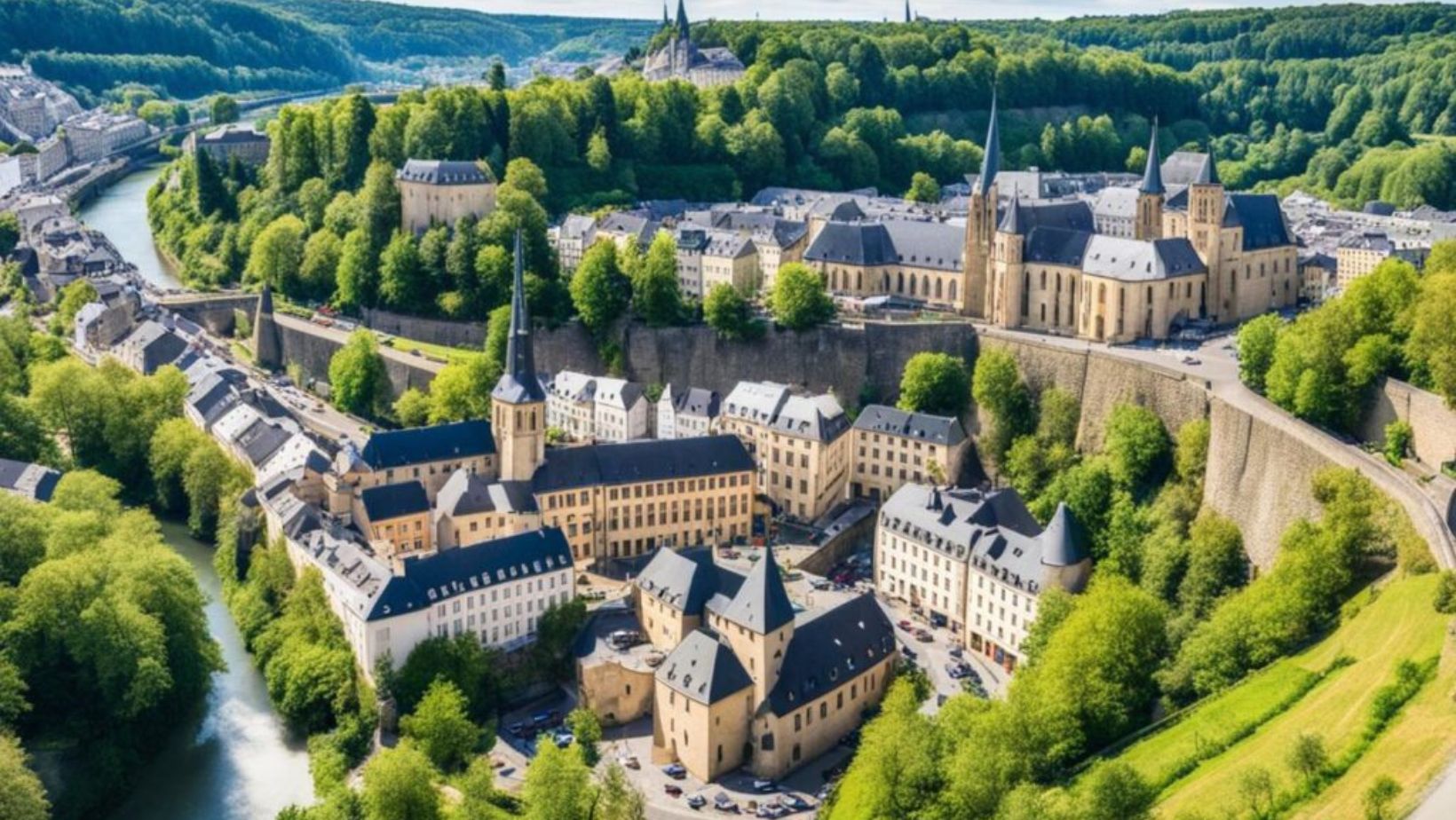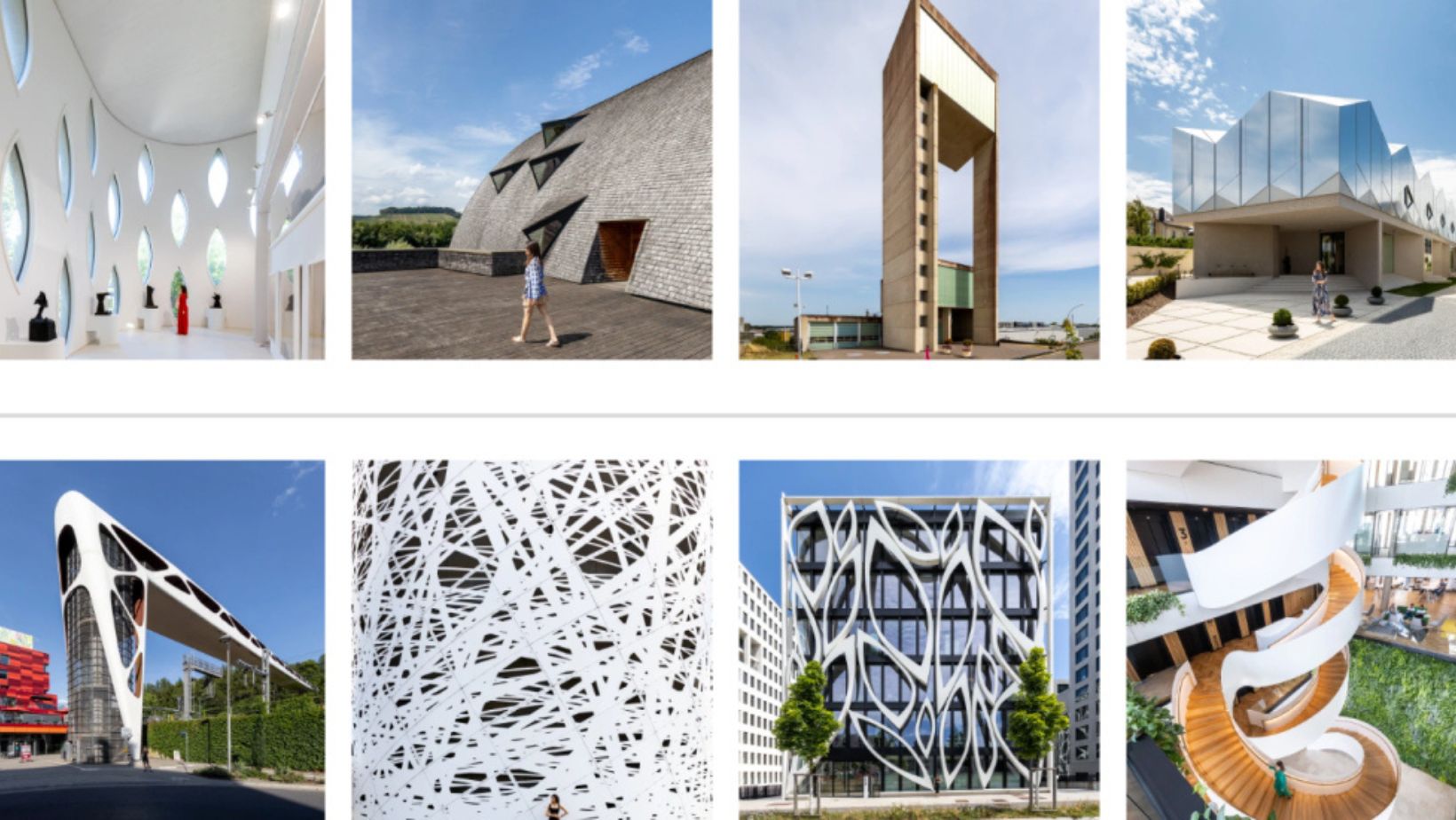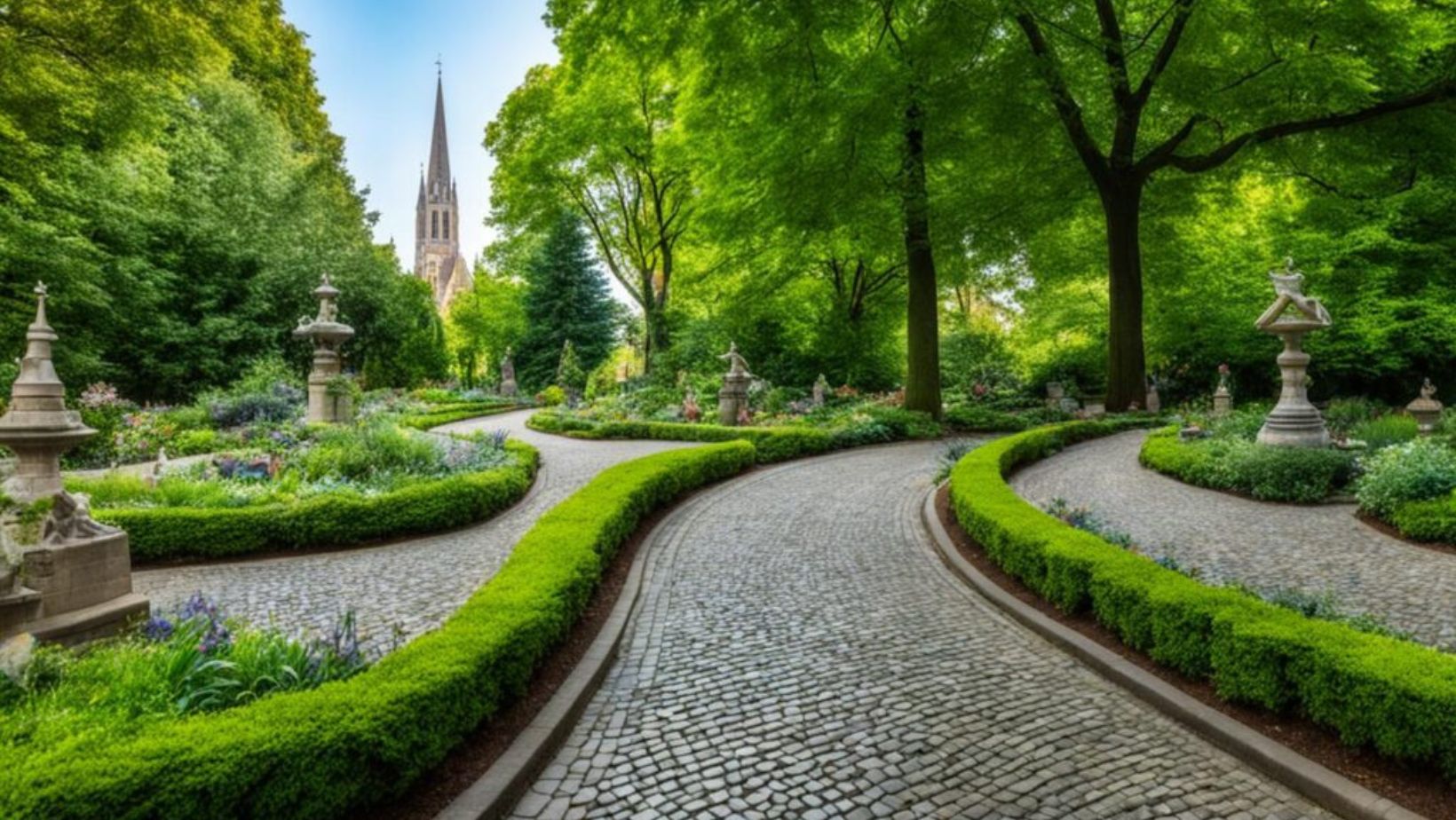Luxembourg is a place where the past and present seamlessly merge. Its medieval castles, winding streets, and historic architecture sit side by side with vibrant cafes, sleek modern buildings, and cutting-edge museums. This unique blend creates a destination unlike any other, where you can wander through ancient fortresses and then enjoy a drink at a trendy bar just around the corner. Whether you’re a history buff or a fan of contemporary culture, Luxembourg’s Layers offers the perfect balance, making it a must-see for anyone looking to experience both worlds in one captivating city.
The Castle Heritage: Luxembourg’s Layers A Glimpse into the Past

Castles have played a significant role in Luxembourg’s history, reflecting its strategic importance in Europe. These fortified structures were not only residences for nobility but also military strongholds designed to defend the region. Luxembourg’s castles, such as the famous Bock Casemates, were built to withstand invasions and were central to the country’s defense during medieval times. Over centuries, they evolved, witnessing political shifts and serving as symbols of power and authority.
Today, these castles offer a glimpse into the country’s rich past. They stand as reminders of Luxembourg’s medieval heritage and the various ruling dynasties that shaped its identity. Many castles, like the Vianden Castle, have been preserved and are now popular tourist attractions. Visitors can explore these historical landmarks to learn about Luxembourg’s complex history and architectural evolution.
Luxembourg’s castle heritage is also intertwined with its cultural identity. These sites are important not just for their historical value but also for their role in local traditions and folklore. They continue to influence Luxembourg’s modern identity, celebrating the past while shaping the future.
Vianden Castle: Luxembourg’s Layers The Majestic Fortress
Castles have played a significant role in Luxembourg’s history, reflecting its strategic importance in Europe. These fortified structures were not only residences for nobility but also military strongholds designed to defend the region. Luxembourg’s castles, such as the famous Bock Casemates, were built to withstand invasions and were central to the country’s defense during medieval times. Over centuries, they evolved, witnessing political shifts and serving as symbols of power and authority.
Today, these castles offer a glimpse into the country’s rich past. They stand as reminders of Luxembourg’s medieval heritage and the various ruling dynasties that shaped its identity. Many castles, like the Vianden Castle, have been preserved and are now popular tourist attractions. Visitors can explore these historical landmarks to learn about Luxembourg’s complex history and architectural evolution.
Luxembourg’s castle heritage is also intertwined with its cultural identity. These sites are important not just for their historical value but also for their role in local traditions and folklore. They continue to influence Luxembourg’s modern identity, celebrating the past while shaping the future. Luxembourg’s Layers
Bourscheid Castle: A Panoramic Beauty of Luxembourg’s Layers
Bourscheid Castle is a stunning medieval fortress located in Luxembourg, offering a breathtaking panoramic view of the surrounding countryside. Perched on a hilltop, it overlooks the Sûre River valley, providing visitors with a glimpse of Luxembourg’s natural beauty. The castle’s strategic location made it an important military site during the medieval period, guarding the region from invaders. Today, it stands as a testament to the rich history and architecture of the time. Luxembourg’s Layers
The history of Bourscheid Castle dates back to the 10th century, with its construction attributed to the powerful Bourscheid family. Over the centuries, the castle underwent several modifications and expansions, reflecting the changing times. Despite suffering from damage during the 17th century, it has been partially restored, allowing visitors to explore its impressive towers, walls, and surrounding grounds. The combination of historical significance and scenic views makes Bourscheid Castle a must-visit landmark in Luxembourg. Luxembourg’s Layers
Whether you are a history enthusiast or simply enjoy scenic vistas, Bourscheid Castle offers a unique experience. The castle’s location allows for panoramic views of the lush forests, rolling hills, and the winding river below. It’s a perfect spot for both relaxation and learning about the rich past of Luxembourg. Luxembourg’s Layers
Luxembourg City: A Hub of Modernity and Tradition
Luxembourg City is a vibrant blend of modernity and tradition. The city’s skyline features sleek, contemporary buildings that reflect its role as a global financial center. However, it also preserves its rich history through well-maintained landmarks like the Bock Casemates and the Grand Ducal Palace. These historic sites provide a glimpse into Luxembourg’s past while contrasting with the modern developments surrounding them.
The city’s architecture showcases this balance, with new structures harmonizing alongside ancient fortifications. Visitors can explore cobbled streets lined with charming medieval buildings and then enjoy modern art galleries or trendy cafes. The integration of green spaces, such as the Pétrusse Valley, enhances the city’s appeal, offering a natural retreat amid urban life. Luxembourg City is a living example of how tradition and innovation can coexist in harmony. Luxembourg’s Layers
The Grand Ducal Palace: Royalty at the Heart of Luxembourg’s Layers
The Grand Ducal Palace is a symbol of Luxembourg’s rich history and royal heritage. Located in the heart of the capital, Luxembourg City, it serves as the official residence of the Grand Duke. The palace’s stunning architecture reflects a blend of Renaissance and Gothic styles, making it a visual masterpiece. Its ornate façade, with intricate stonework and delicate turrets, draws visitors from around the world. Luxembourg’s Layers
The palace has been the seat of Luxembourg’s monarchy for centuries, witnessing important moments in the country’s history. Built in the 16th century, it was originally a city hall before being converted into the Grand Ducal residence in 1890. The palace remains a symbol of Luxembourg’s political and cultural importance. It is also used for official functions and state visits, showcasing the Grand Duchy’s global connections.
Inside, the palace boasts lavish rooms decorated with elegant furnishings, offering a glimpse into the royal lifestyle. Though parts of the palace are not open to the public, guided tours allow visitors to explore its historical significance. The palace also stands as a reminder of Luxembourg’s unique position in Europe, bridging history and modern diplomacy. Luxembourg’s Layers
Modern Architecture in Luxembourg: A Contemporary Evolution

Luxembourg is known for its blend of rich history and modern innovation. Modern architecture is seamlessly integrated into the city’s historic landscape, creating a striking contrast between the old and the new. Iconic buildings, such as the Philharmonie Luxembourg, showcase contemporary design while respecting the city’s architectural heritage. These structures often incorporate glass, steel, and minimalist aesthetics, adding a fresh perspective to traditional stone facades. Luxembourg’s Layers
The Grand Duchy of Luxembourg balances preserving its medieval buildings with embracing modernity. New constructions are often designed to complement or highlight historic sites rather than overshadow them. For instance, the MUDAM (Musée d’Art Moderne Grand-Duc Jean) blends modern design with the surrounding landscape of the city’s fortifications. This careful integration allows Luxembourg to evolve while retaining its cultural identity.
Architects in Luxembourg focus on sustainability and functionality. Green building techniques and energy-efficient solutions are becoming more common in new projects. These features enhance the city’s modern feel while aligning with environmental goals, demonstrating how contemporary architecture can coexist harmoniously with the past.
The American Cementery Memorial: A Tribute to History
The American Cemetery Memorial stands as a significant tribute to history, honoring the bravery and sacrifice of American soldiers who fought during World War II. Located in Normandy, France, it is the resting place for over 9,000 soldiers, including those who perished during the D-Day invasion. The site, meticulously maintained, offers visitors a place for reflection and remembrance. The memorial’s design incorporates a chapel, columns, and reflective pools, emphasizing the solemn nature of the grounds.
The American Cemetery Memorial is not only a burial site but also an educational resource. It provides historical context about the events leading to the Allied victory in Europe. Visitors can explore displays and exhibits that explain the impact of the soldiers’ contributions. The cemetery serves as a powerful reminder of the cost of freedom and the sacrifices made during the war. Luxembourg’s Layers
This memorial has become a symbol of the enduring bond between the United States and France. It reflects the shared history and mutual respect between the two nations. Today, the American Cemetery Memorial continues to draw people from around the world, preserving the legacy of those who gave their lives for liberty. Luxembourg’s Layers
Luxembourg’s Vibrant Cultural Scene: Luxembourg’s Layers
Luxembourg’s vibrant cultural scene is a rich tapestry of history, art, and modern creativity. The country boasts a range of art galleries, where visitors can experience everything from classical works to contemporary pieces. The Musée d’Art Moderne Grand-Duc Jean (MUDAM) is one of the most renowned, showcasing cutting-edge exhibitions. Additionally, the National Museum of History and Art (MNHA) offers insight into Luxembourg’s past through its extensive collection. Luxembourg’s Layers
The theater scene in Luxembourg is equally dynamic, with performances in both French and German. The Grand Théâtre de Luxembourg is a key venue, hosting a variety of plays, operas, and dance performances. For those interested in smaller productions, local theaters like the Théâtre des Capucins offer intimate shows and avant-garde works. The diversity in programming ensures that there’s something for everyone.
Festivals are an essential part of Luxembourg’s cultural life, celebrating music, theater, and the arts. The Schueberfouer, held annually, is one of the largest and oldest fairs in Europe, featuring carnival rides, food stalls, and performances. Other popular events, like the Luxembourg City Film Festival, bring international films and filmmakers to the public. These festivals allow visitors to experience the unique spirit of Luxembourg’s culture.
Natural Beauty: Luxembourg’s Green Escapes

Luxembourg offers a perfect blend of urban life and nature. The country’s natural parks and hiking trails provide a peaceful retreat from the city’s hustle. The Mullerthal Region, also known as “Little Switzerland,” features winding trails through lush forests, rocky gorges, and scenic waterfalls. It’s ideal for hikers looking to immerse themselves in nature.
Another highlight is the Luxembourg Ardennes, with its dense forests and rolling hills. The region is home to historical castles and charming villages. The Upper Sure Nature Park offers a variety of outdoor activities like hiking, cycling, and kayaking. The park’s calm lakes and rivers make it a popular spot for nature lovers. Luxembourg’s Layers
For those closer to the city, the Parc Merveilleux in Bettembourg is a family-friendly park with beautiful landscapes, a zoo, and play areas. Additionally, the Oesling Region in the north is great for hiking and wildlife spotting. Luxembourg’s green spaces provide a peaceful escape while still being within reach of the city’s modern attractions.
Conclusion: Luxembourg’s Layers
In conclusion, Luxembourg offers a captivating blend of its rich history and contemporary appeal. The country’s castles, such as the iconic Vianden Castle and the Grand Ducal Palace, provide a glimpse into its medieval past, showcasing impressive architecture and timeless stories. At the same time, Luxembourg City thrives with modern charm, from its vibrant cultural scene to its stylish cafes and shops. This seamless fusion of old and new creates a unique atmosphere where visitors can experience the best of both worlds—where ancient fortresses coexist with cutting-edge urban life, offering an unforgettable experience.
FAQs
What are the most famous castles to visit in Luxembourg?
Luxembourg is home to several stunning castles, including the medieval Beaufort Castle, the picturesque Vianden Castle, and the grand Luxembourg City Fortress. Each offers a unique glimpse into the country’s history and architectural beauty.
How does Luxembourg balance modernity with historical preservation?
Luxembourg is renowned for seamlessly blending modern architecture with its rich history. The city of Luxembourg, for example, showcases contemporary skyscrapers alongside preserved medieval fortifications, creating a harmonious fusion of past and present.
Is Luxembourg a popular destination for history lovers?
Absolutely! Luxembourg’s rich heritage, marked by its castles, museums, and historical landmarks, makes it an excellent destination for history enthusiasts. The country’s fortified cities and picturesque villages offer a deep dive into centuries of European history.
What is the significance of Luxembourg’s fortifications?
Luxembourg’s fortifications, particularly the underground bunkers and casemates in Luxembourg City, played a crucial role in the country’s defense strategy throughout history. These fortresses reflect Luxembourg’s strategic importance in Europe, especially during times of war.
What are some modern attractions in Luxembourg?
In addition to its historical sites, Luxembourg also boasts modern attractions like the Mudam (Museum of Modern Art) and the Philharmonie Luxembourg. These venues highlight the country’s contemporary cultural scene, offering a contrast to its ancient castles.

